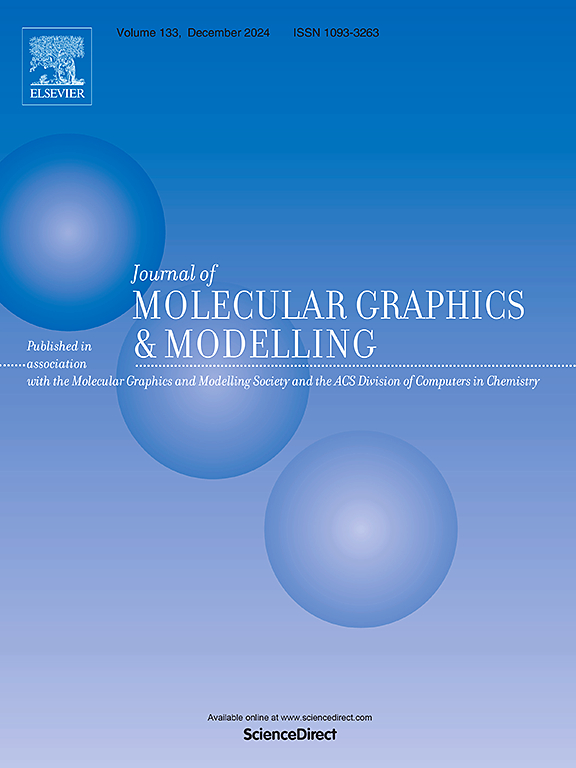反应分子动力学模拟HMX/DNAN在高温下的热分解机理
IF 3
4区 生物学
Q2 BIOCHEMICAL RESEARCH METHODS
引用次数: 0
摘要
本文利用反应分子动力学研究了HMX/DNAN熔铸炸药体系在高温下的热分解过程。揭示了体系的初始反应路径以及DNAN对HMX热分解的影响。结果表明,DNAN分解产生的H原子和硝基与HMX及其中间体发生反应,促进了HMX的热解,而HNO2分解产生的OH自由基继续诱导HMX的分解。活化能计算表明,DNAN的加入增强了HMX对热刺激的敏感性。在产物方面,DNAN的加入对HMX最终产物H2O的影响显著,而对CO2的影响相对较小。在2000 K ~ 3500 K时,随着温度的升高,混合体系中团簇的最大数量总体呈下降趋势。本文章由计算机程序翻译,如有差异,请以英文原文为准。

Thermal decomposition mechanism of HMX/DNAN at high temperatures by reactive molecular dynamics simulations
This work investigated the thermal decomposition process of the HMX/DNAN melt-cast explosive system at high temperatures using reactive molecular dynamics. The initial reaction paths of the system and the effects of DNAN on the thermal decomposition of HMX were revealed. The findings indicated that the H atoms and nitro groups produced by the decomposition of DNAN were reacted with HMX and its intermediates, which in turn promoted the pyrolysis of HMX, while the OH radicals produced by the decomposition of HNO2 continued to induce the decomposition of HMX. Calculations of activation energies showed that the addition of DNAN enhanced the sensitivity of HMX to thermal stimuli. In terms of products, the addition of DNAN significantly impacted the final product H2O of HMX, while its impact on CO2 is relatively small. At 2000 K–3500 K, the maximum number of clusters in mixed system showed a general decreased trend with increased temperature.
求助全文
通过发布文献求助,成功后即可免费获取论文全文。
去求助
来源期刊

Journal of molecular graphics & modelling
生物-计算机:跨学科应用
CiteScore
5.50
自引率
6.90%
发文量
216
审稿时长
35 days
期刊介绍:
The Journal of Molecular Graphics and Modelling is devoted to the publication of papers on the uses of computers in theoretical investigations of molecular structure, function, interaction, and design. The scope of the journal includes all aspects of molecular modeling and computational chemistry, including, for instance, the study of molecular shape and properties, molecular simulations, protein and polymer engineering, drug design, materials design, structure-activity and structure-property relationships, database mining, and compound library design.
As a primary research journal, JMGM seeks to bring new knowledge to the attention of our readers. As such, submissions to the journal need to not only report results, but must draw conclusions and explore implications of the work presented. Authors are strongly encouraged to bear this in mind when preparing manuscripts. Routine applications of standard modelling approaches, providing only very limited new scientific insight, will not meet our criteria for publication. Reproducibility of reported calculations is an important issue. Wherever possible, we urge authors to enhance their papers with Supplementary Data, for example, in QSAR studies machine-readable versions of molecular datasets or in the development of new force-field parameters versions of the topology and force field parameter files. Routine applications of existing methods that do not lead to genuinely new insight will not be considered.
 求助内容:
求助内容: 应助结果提醒方式:
应助结果提醒方式:


